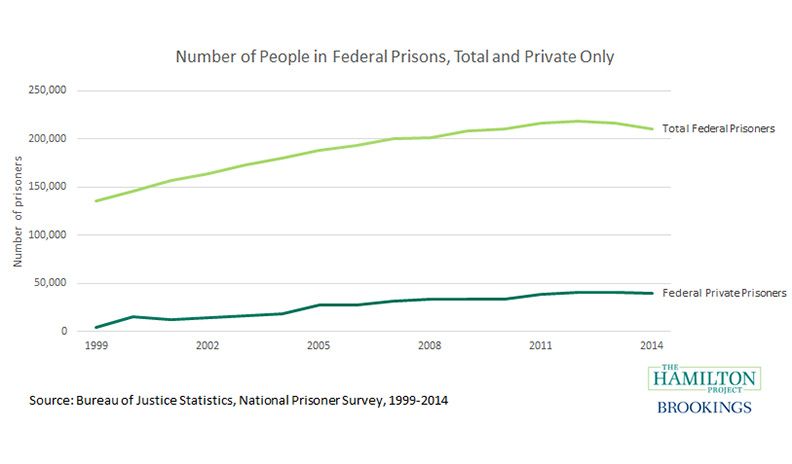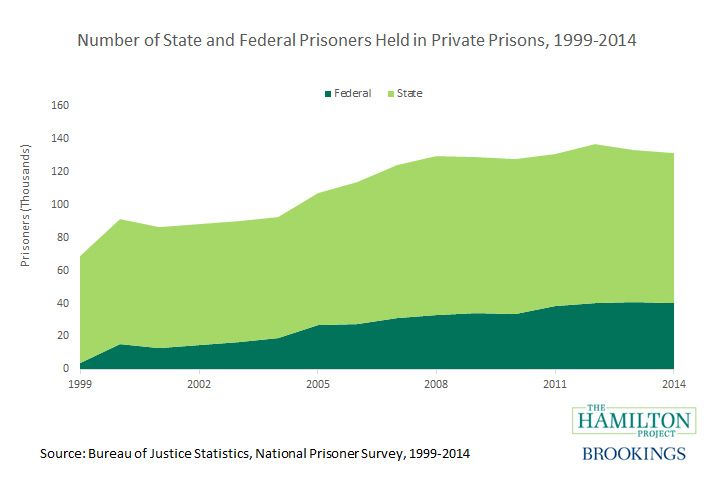Today, the Department of Justice (DOJ) announced that it will reduce, and eventually end, the use of federal private prisons. Private prison contracts emerged at the federal level as a response to overcrowding due to rising prison populations during the 1990s. The federal prison population began to decline in 2012, and the number of inmates in federal private prisons leveled off around the same time, as shown in the figure below. However, at the end of 2015, the Federal Bureau of Prisons (BOP) still had a prison population 20 percent over its rated capacity

To a large extent, the argument for private prisons hinges on their ability to provide the same level of prisoner services, safety, and security at a lower cost. While annual per-capita costs average about 8 percent lower in private prisons, several factors make it difficult to provide a direct comparison of public and private prison costs. Data are not available on the differences in demographics of prisoners between BOP and private facilities—although it is known that private prisons house a large share of noncitizens—and costs associated with oversight of private prisons are not always accounted for in cost comparisons.
However, today’s DOJ announcement follows a recent report by its Office of the Inspector General that found a higher rate of safety and security incidents in privately contracted correctional facilities, as well as substantial cost overruns. The DOJ announced that it will not close private facilities overnight, but rather will allow existing contracts to expire over the next five years, gradually relocating affected prisoners to other facilities.
While the use of federal private prisons has garnered substantial attention, only 30 percent of inmates held in private prisons are held at the federal level, with the majority currently held in state private prisons.

In 2014, just over half of all states maintained contracts with private prisons. Similar to the federal government, a number of states, including Idaho, Mississippi and Kentucky ended some of their private prison contracts in response to security issues and cost concerns. While states such as Idaho have maintained their reductions in private prison contracts, Kentucky is now considering reopening some of these prisons in an attempt to address continued, severe overcrowding. Despite recent measures encouraging early release and more lenient sentencing for juveniles, Kentucky’s prison population has not been reduced sufficiently.
In order for the Department of Justice to achieve its goal of eventually ending the use of federal private prisons, it will be important to ensure that reductions in the federal prison population continue. These issues will be further explored in a series of papers that the Hamilton Project will release this October, with a focus on: reducing high rates of incarceration; reducing recidivism; and facilitating the successful reintegration of formerly incarcerated individuals.

